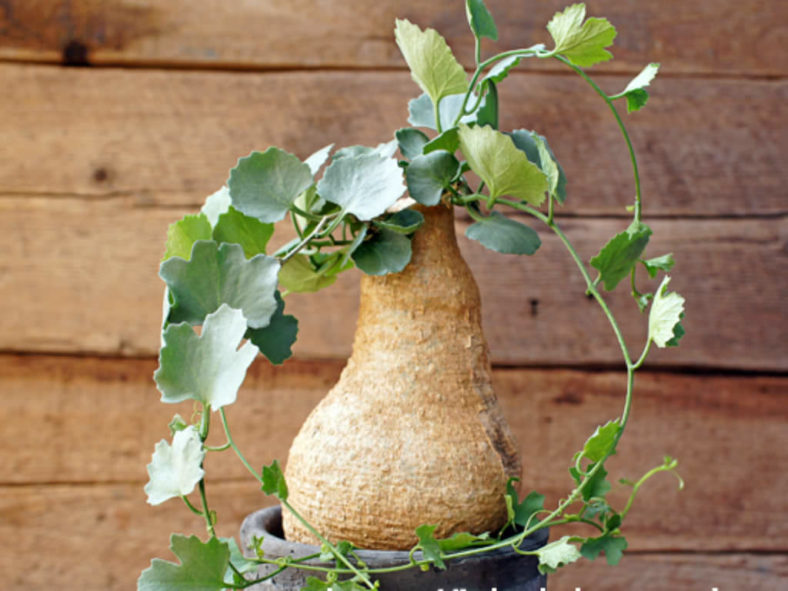Kedrostis africana, commonly known as Baboon's Cucumber, is a monoecious caudiciform plant native to Namibia and South Africa. It forms a large caudex with annual stems. The leaves are roughly triangular but have several lobes, creating beautiful foliage. The plant blooms every year in summer. The male flowers are green-yellow to whitish or cream-colored, while the female flowers are solitary or few in fascicles, green-yellow to whitish or cream-colored.
Baboon's Cucumber tuber is widely used in traditional medicine as an emetic, purgative, diuretic, anti-dropsy, and to treat syphilis. Also, a decoction from the crushed fresh bulb is taken twice daily to manage obesity.
Growing Conditions and General Care
Baboon's Cucumber is monoecious (having both the male and female flowers in the same specimen) and is often self-fertile, so the showy, orange fruits are readily formed. It can be grown from seed in most areas as long as the young plants are protected against drought, severe frost, and too much sunlight.

The stems need some support as a climber to give a showy effect. Baboon's Cucumber prefers well-drained soil, lots of water during the growing period, and some sun. It grows very slowly, but it is possible to increase the speed of growth by providing an adequate amount of water, warmth, and fertilizer during the active growing season.
Baboon's Cucumber likes a sunny position but avoid direct blasting sun in summer. Water regularly during the summer. Avoid watering in the fall or winter. The plant is susceptible to rot if the soil is too wet.
This plant is one of the hardiest caudiciforms, tolerating winter rain and several degrees of frost. It can be grown outdoors in frost-free climates but must be kept above 32 °F (0 °C) and dry in winter.
Links
- Back to genus Kedrostis
- Succupedia: Browse succulents by Scientific Name, Common Name, Genus, Family, USDA Hardiness Zone, Origin, or cacti by Genus